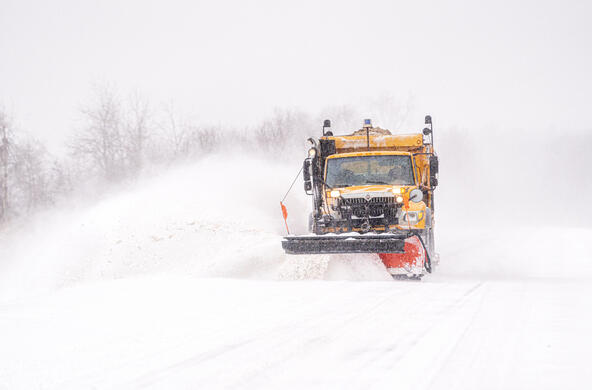Most of us have seen helium balloons gently float into the sky, whether by accident or intentional release. Watching a balloon disappear into the clouds can feel almost tranquil. But what goes up must come down, with serious impacts on the environment.
While airborne, balloons present hazards to aircraft and the electrical grid. Mylar balloons are known to cause power outages and fires when they become entangled in power lines. When balloons lose their buoyancy and come back to earth, they can land miles away from their release site. Balloons and their ribbons persist for a long time in the environment. Mylar balloons are not biodegradable, and latex balloons can last up to four years — plenty of time to do harm.
For communities such as Chicago and Milwaukee, many balloons end up in Lake Michigan, eventually washing up on beaches. The remnants of deflated balloons endanger fish and wildlife, which can get tangled in the ribbons and become unable to move or eat. In some cases, they eat balloons, which interfere with their digestion. Consumption of deflated balloons is a particular hazard for marine animals, including dolphins and sea turtles, which may mistake them for jellyfish.

Once in the environment, like other forms of plastic, balloons fragment into tiny pieces. These “microplastics” accumulate in bodies of water, where they are eaten by invertebrates and fishes. Microplastics have even been found in parts of fish and shellfish that we eat and in our own bodies. No place in the world seems to be free of microplastic contamination because the tiny particles are readily transported by air and water currents. The effects of microplastics on aquatic life are not well understood, and investigation is complicated by the great diversity of particle composition, size and time in the environment. Keeping plastic litter out of our bodies of water is essential to reducing microplastic pollution.
On the shores of the remote North and South Manitou Islands, part of the Sleeping Bear Dunes National Lakeshore in northwestern Michigan, balloons are the most common litter. These beaches are visited by relatively few people — the litter is testimony to the long life and range of escaped balloons. During a 1-mile beach walk on South Manitou Island, we collected more than 100 deflated balloons with their ribbons, which included Mylar and latex ones. We’ve also seen many balloon remnants along the shores of North Manitou Island, including beaches that are nesting sites of the piping plover, an endangered shorebird.
Another concern is that helium is a nonrenewable resource with many crucial industrial, medical and scientific uses, such as in MRIs, superconductors and weather balloons. The U.S. is fortunate to be rich in helium; we produce 40% of the gas worldwide. But there is a global helium shortage, and projections of future helium demand indicate that we will face serious limitations in the helium supply within only a few decades.
The next time you are preparing for a party or memorial, consider alternatives to helium balloons. For a party, there are banners, flags, paper streamers, pinwheels or bubbles. For a memorial, you can fly kites, light candles, use seed paper to “plant” meaningful messages (perhaps a native pollinator garden) or host a tree planting.
If you do buy or encounter helium balloons, don’t let them escape. In fact, legislation being considered in the Illinois General Assembly would make the intentional release of balloons illegal, which seems wise given the fact that no matter where they end up, they become litter. And unless and until such legislation exists, if you see helium balloons released at events such as football games, consider asking the organizers to use something other than balloons to create a festive atmosphere at future events.
Let’s enjoy the summer without degrading the environment with helium balloons.







